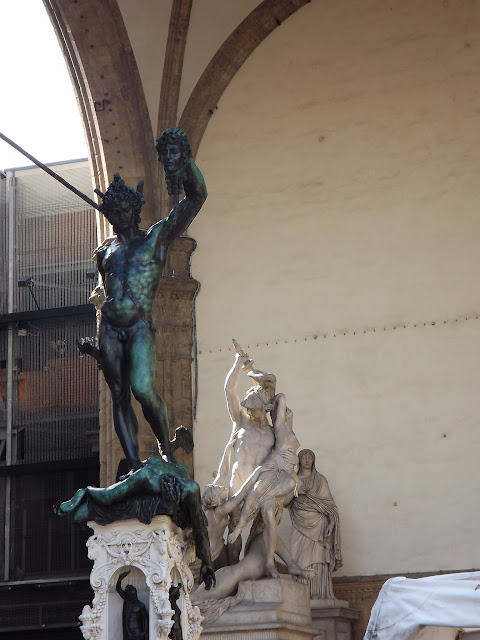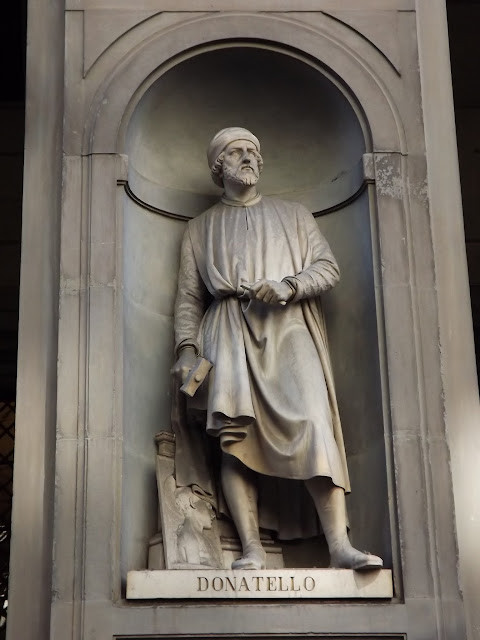There is an amazing sculpture gallery there, and I've got some of the stuff below:
 |
| Perseus slays Medusa |
 |
| Hercules and the Centaur |
 |
| Rape of the Sabine Women (I think) |
In the afternoon/evening, we took a tour of the Chianti region, which lies in the Florence and Sienna regions and was a point of contention between the two city states. We toured a wonderful vineyard, Castello il Palagio.
The site was originally a Chianti castle built in the 1200s. In the 1800s (I think), it was converted into a vintnery. It turns out that the dungeon was the perfect temperature for storing wine casks as they age. And that cellar is quite impressive, particularly the largest wine barrels.
In the picture below, the "72" refers to the number of hundreds of liters that the barrel held (it has been retired, after about 20 years of service). The smaller barrels that we typically see last 3-4 years.
After the tour came the wine tasting: a Chianti Classico and two Chianti Classico Reserves (2004 and 2007). If you buy a Chianti, look for the "classico" label. They have very strict requirements, including that at least 80% of the grapes used are Sangiovese, and 100% are grown in the Chianti region. All Classico wines are aged in barrels for 9+ months. All Reserve are aged over 2 years in the barrel, and at least another year in the bottle. They are quite a bit smoother, as well as more expensive... although the prices are really quite good... certainly, less than a comparable Virginia wine.
The "tasting" was really a bunch of bottles with assorted cheeses, bruschetta with extra virgin olive oil, goat cheese with sweet hot pepper jelly, various salamis, breads, and crackers -- all produced on premises.
We officially finished with Vin Santo (literally, "holy wine") and biscotti. Vin Santo is a sweet digestif dessert wine. Vin Santo is made from grapes that are left to dessicate, concentrating the sugars and sweetness. My memory is that at this vineyard, the grapes are left to dry from harvest until about March -- they are basically raisins -- before fermentation. The result is a very strong dessert wine that is incredible with biscotti.
That was the official end. We also had the opportunity to try their grappa. For the uninitiated, grappa is produced by distilling the leftover skin, stems, pulp and seeds of the grapes. It is 40%+ alcohol. Imagine a fine Scotch... except not fine. You have grappa. Sorry, my opinion.
Anyway, by the time we left, everyone was in fine spirits indeed. Our next stop was Greve, a medieval Chianti town whose favorite son is Giovanni da Verrazanno. We had a number of Long Islanders in our group. They were thrilled.


















No comments:
Post a Comment